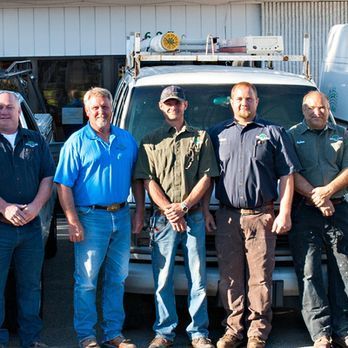How to Fix Frozen Pipes: A Comprehensive Guide
Frozen pipes are a common issue, especially during the cold winter months. When temperatures drop, the water inside pipes can freeze, potentially causing them to burst. Dealing with frozen pipes can be stressful, but with the right knowledge and tools, you can often resolve the issue yourself and prevent costly damage. This guide walks you through the steps to safely thaw and fix frozen pipes.
Safety First: Preparing to Thaw and Repair Frozen Pipes
Before attempting to thaw frozen pipes, it's crucial to ensure your safety. Here are a few important safety tips:
Turn Off the Water: Locate your main water shut-off valve and turn it off. This will prevent water from gushing out when the pipes thaw or if there's a burst pipe.
Open Faucets: Open the affected faucets (both hot and cold) to allow any remaining water and pressure to escape.
Inspect for Damage: Check for visible damage like cracks, bulges, or leaks. If you notice any, you may need to call a professional plumber.
Methods for Thawing Frozen Pipes:
1. Hair Dryer or Heat Gun:
- Locate the frozen section of the pipe.
- Use a hair dryer or heat gun on the lowest setting to gently warm the pipe. Start from the faucet end and work your way towards the frozen area.
- Continue until water flows freely. Be patient; this method can take some time.
2. Hot Towels:
- Soak towels in hot water and wrap them around the frozen pipe.
- Replace the towels as they cool. This gradual heating can help thaw the ice inside the pipe.
3. Electric Pipe Heating Tape:
If you live in an area prone to freezing, consider installing electric pipe heating tape. This tape can be wrapped around pipes and plugged in to provide consistent, low-level heat.
4. Space Heaters:
- In unheated areas like basements or crawl spaces, place a space heater near the frozen pipe. Be sure to follow safety guidelines for space heater use.
What NOT to Do:
- Do not use open flames: Avoid using propane torches, kerosene heaters, or any open flames to thaw pipes, as this can be dangerous and lead to fires.
- Do not use excessive force: Never use excessive force to try to break the ice inside the pipe, as this can cause damage.
Preventing Future Freezing:
To prevent frozen pipes in the future:
- Insulate Pipes: Insulate exposed pipes in unheated areas, such as basements and crawl spaces.
- Seal Cracks: Seal any cracks or gaps in walls and foundation that allow cold air to reach pipes.
- Let Faucets Drip: During extremely cold nights, allow faucets to drip slowly to keep water flowing.
Conclusion:
Fixing frozen pipes can be a DIY project, but it's essential to proceed with caution and follow safety guidelines. If you're uncomfortable or unable to thaw the pipes yourself, or if you suspect pipe damage, it's wise to call a professional plumber. Taking preventive measures is the best way to ensure you won't face this problem again in the future. Stay warm and keep your pipes protected!

Emergency Plumbers
At sunshine plumbers, we are proud to be on call 24 hours a day, 365 days a year, ready to provide prompt and reliable emergency plumbing services
Residential Plumbing
Let sunshine plumbers take care of your plumbing needs, and we'll make sure your home's plumbing system runs smoothly and efficiently.
Commercial Plumbing
Trust sunshine plumbers to keep your commercial plumbing system in top shape, ensuring smooth operations and customer satisfaction.
